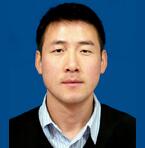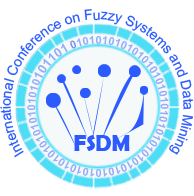Invited Speaker

Dr. Lanyong Zhang, Associate Professor
College of Automation, Harbin Engineering University (HEU), ChinaSpeech Title: Research on Multi-UAV Cooperative Control Based on Consistency Theory and Fuzzy Control
Abstract: Multi-UAV (Unmanned Aerial Vehicle) systems have been the focus of research in the military field at home and abroad in recent years. UAV combat systems have also evolved from “single-platform remote control operations” to “multi-UAV autonomous cluster operations”, supporting combat systems with the characteristics of coordination, autonomy, flexibility under uncertain tasks and environments. The report briefly introduces the development of UAVs, UAV system models, UAV autonomy levels, and UAV cooperation issues. The cooperative control principle based on consistency theory and fuzzy control is given, the cooperative control of formation and obstacle avoidance is introduced, and the cooperative control algorithm based on virtual force is constructed. A brief description of the next research plan is given.
Keyword: Multi-UAV; Cooperative control; Consistency; Fuzzy control; Formation and obstacle avoidance
Biography: Lanyong Zhang received B.E, M.S and Dr. Eng degree from Harbin Engineering University in 2006, 2009 and 2011. He has been working in the college of automation, Harbin Engineering University since 2011. Currently, he is an associate professor and deputy director of the Institute of Automation Engineering. He mainly studies intelligent signal processing, underwater vehicle control system design, ship attitude control.
He mainly engaged in electromagnetic compatibility design of the system, kalman filter and wavelet analysis and random signal processing. He is the member of Youth Working Committee of Chinese Association of Automation, member of the Cloud Control and Decision-Making Professional Committee of the Chinese Society of Command and Control, member of the Academic Committee of Ship Instrumentation, Chinese Society of Naval Architecture, member of Heilongjiang Association of Young Scientific and Technological Workers, invited experts of China Science and Technology Paper Online. He is the review expert of IEEE Transactions on EMC, IEEE Access, IEEE Robotics & Automation Letters, OACTA Press, Journal of Astronautics, Journal of Electronics, Journal Of Instrumentation , editorial board of Journal of Weapons And Equipment Engineering, Journal of Electromagnetic Analysis and Application, special editorial board of New Industrialization. He is the member of Electronic Society, China Society of Shipbuilding Engineering, member of IEEE (93370719). He appointed as the Chief Designer by the 368 plant of China shipbuilding heavy Industry in 2012. In 2014, he was awarded the honorary title of Advanced Individual of Virtue and Style of Young Teachers of Harbin Engineering University. In 2015, hosted the IEEE International Conference on Information and Automation. 2015-2016, he won the honorary title of Outstanding Communist Party Member of Automation College.
He is the project director for the National Natural Science Foundation, the National Defense Foundation of Product Innovation Project, foundation Projects of Heilongjiang, project supported by China Postdoctoral Science Foundation, Doctoral Programs Fund of the Ministry of Education, Heilongjiang Provincial Government Postdoctoral Funding Project, foundation Projects of Harbin. As the technical director, he is responsible for the National Science and Technology Support Plan, Naval Pre-Research and Defense Technology Foundation Projects. He wrote 2 monographs, granted 19 patents for invention, and published 74 academic papers, including 55 SCI/EI retrieves. He has won first prize of Heilongjiang for Technological Invention, second prize of Heilongjiang for Natural Science, second prize of Heilongjiang for Technological Invention and twice third prize of National Defense Technological Invention.
Research Interests: electromagnetic compatibility design of the system, kalman filter and wavelet analysis and random signal processing
